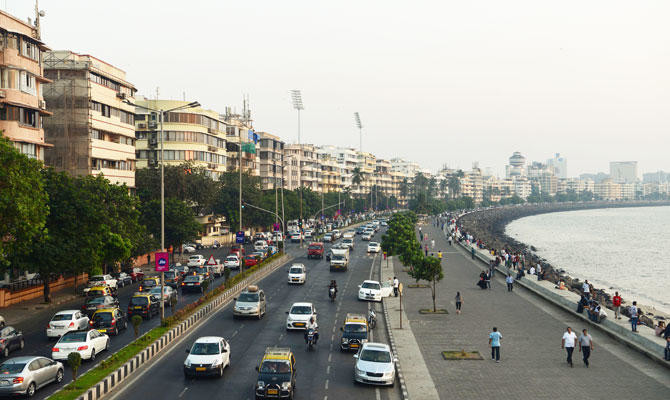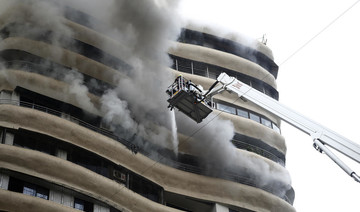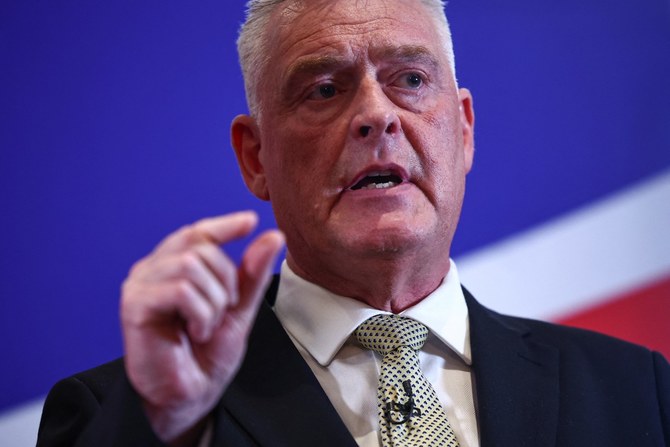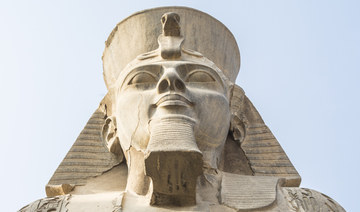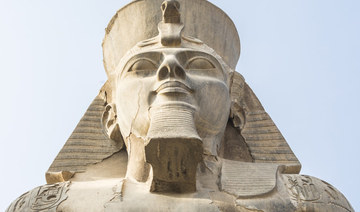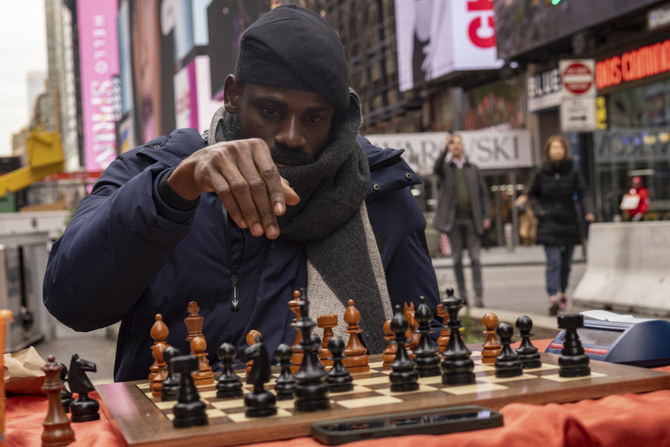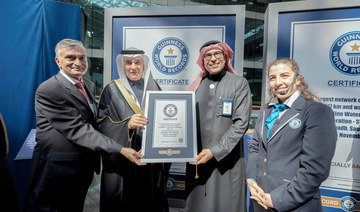LAVASA, India: When David Cooper and his wife were looking for somewhere to retire, they wanted a place by a river or a lake, away from Mumbai’s congested streets, worsening pollution and vanishing green spaces.
They did not have to go far: they bought a two-bedroom flat in a complex for senior citizens in Lavasa, a private city that was being built in the hills a four-hour drive away, and touted as India’s first Smart City.
But their retirement dream quickly took a turn for the worse as Lavasa’s developer, after battling for environmental clearances and surviving a year-long shutdown, ran out of cash.
“When we moved in, it was absolutely pristine. The roads were like race tracks, we could drink water out of the tap, there were no power outages, and we felt absolutely secure,” said Cooper in a cafe in Lavasa.
“Now, there is litter everywhere, buildings are half done, roads are potholed, and there are break-ins because few security staff are left. Our dream has turned into something else,” he said.
With rapid urbanization, governments across the world are making cities “smarter” by using data and digital technology in security, health care, energy, mobility, water and waste management for more efficiency, sustainability and liveability.
Nowhere is this more urgently needed than in India, which is forecast to overtake China by 2022 as the world’s most populous country, according to United Nations data.
But Lavasa’s abandoned buildings and cratered roads are a far cry from the blueprints for a city modelled after the colorful Italian seaside town of Portofino, with facilities for about 250,000 people to live, learn, work and play in.
In its decline, Lavasa serves as a cautionary tale for India’s $7.5 billion plan to turn 100 urban centers into Smart Cities by 2020, with high-speed Internet and modern transportation systems, analysts say.
The federal program does not address structural issues such as poor design, and ignores the needs of low-income and marginalized groups, according to planners and rights groups.
“Without fixed targets and no clear-cut delivery or assessment plan, there is a lot of confusion over what makes a city ‘smart’,” said Saswat Bandyopadhyay, a professor at CEPT University in Ahmedabad, who teaches a course on smart cities.
“A city can install 1,000 CCTV cameras or 100 solar-powered street lights and call itself smart. But that is not it,” he told the Thomson Reuters Foundation.
SATELLITE CITIES
The UN forecasts the world’s urban population to grow to 70 percent by 2050 from 55 percent now.
India will add about 300 million people to its urban centers over the next 20 years, and requires investment of $1.2 trillion to handle this transformation, according to consultancy McKinsey.
“Planned urbanization is required rather than the ad-hoc, unplanned urbanization that we have seen so far,” said Shirish Sankhe, a McKinsey senior partner in India.
“The Smart Cities Mission is good and necessary, but we need it in addition to other efforts to improve urban centers.”
As areas are upgraded in each city, they create “islands of excellence” that need to be scaled up extensively so everyone can benefit, he said.
One solution is to build at least 25 new satellite cities for up to 1 million people each, near the country’s biggest urban centers, Sankhe said. They would benefit from proximity to the large cities, as well as careful planning, he said.
But from ancient Constantinople to Myanmar’s Naypyidaw, there are few examples of successful purpose-built cities.
India’s western state of Gujarat alone had planned 24 new smart cities before the federal plan was launched in 2015.
Few of these have materialized, however.
Amaravati, India’s first greenfield capital in decades, has been hailed as a model planned city.
But it is well behind schedule, and criticized for ignoring protests of displaced farmers, and the ecological impact of building on farmland close to the river.
“Purpose-built cities are often just glorified gated communities. A city must grow organically, with a mix of people and purposes,” said Raj Cherubal, chief executive officer of Chennai Smart City, which oversees the upgrade of the southern city.
“Smart Cities are not just about technology; they’re about a better quality of life. And a better quality of life should not be for just a small section of people,” he said.
LIMITED FOCUS
But most cities in India’s Smart Cities Mission are only upgrading small areas totalling an average of less than 5 percent of the city’s total area, according to advocacy group Housing and Land Rights Network (HLRN) in New Delhi.
That will impact less than a quarter of India’s urban population of about 400 million people, said Shivani Chaudhry, HLRN’s executive director.
“It is a restrictive approach to urban development, with a limited focus on marginalized groups including indigenous people, women and other minorities,” she said.
Focusing on technology may widen inequality, while the upgrades raise the risk of gentrification and evictions, she said.
Evictions of slum dwellers have already been seen in about a third of the planned smart cities, she said.
Rahul Kapoor, director of the Smart Cities Mission, said that the program combines integrated planning and implementation of urban renewal initiatives aimed at city-wide benefits.
The result will be inclusive cities that provide “a decent quality of life to every city dweller irrespective of their economic status, background, gender, age or disabilities,” he said.
In Lavasa, the other risk of greenfield cities is apparent: housing just a fraction of its intended population, its formerly posh clubhouse and convention center look decrepit, and its technology and infrastructure are visibly crumbling.
A spokesman for Lavasa Corporation, a unit of Hindustan Construction Co., did not respond to emails seeking comment.
“Building a city from scratch is tough. It needs time to grow,” said Jimmy Shaw, who runs several restaurants and a hotel in Lavasa.
“Those of us who have homes here, we still love it. Though it’s hard to watch our dream city deteriorate,” he said.
For the hundreds of villagers who gave up their land for the city, their very livelihoods are at stake.
Many were resettled in pucca, or permanent homes, and found jobs in the newly built houses and businesses. Their children joined the free English-language school run by the developer.
But with funding drying up, the school’s future is uncertain, and those who work as security guards — like Satish Pasalkar, a former farmer — have not been paid in months.
“When Lavasa came, our lives improved — we had new opportunities and the option of a different future,” he said.
“We can only do well if this city thrives.”


